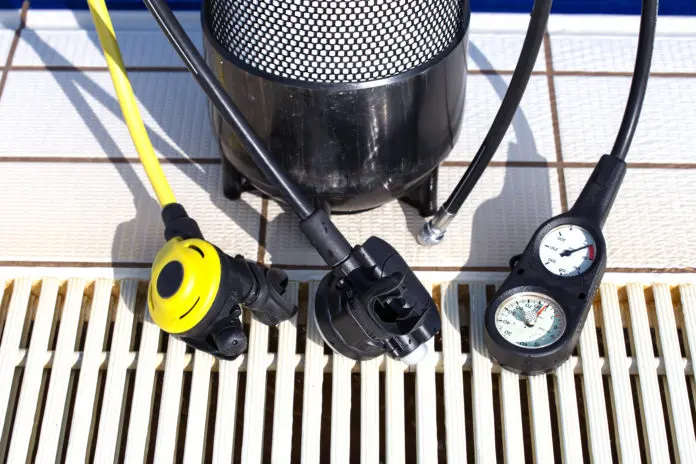This story may be over a year old, but it never hurts to revisit something if it can help a diver in trouble.
According to the Divers Alert Network’s Alert Diver magazine, a 24-year-old female diver had a sobering experience recently when entering the water: her Octopus hose started flailing around and spewing air out uncontrollably.
The incident occurred in chest-deep water, and after her buddy turned off her cylinder, it was discovered that the Octopus second stage had broken off the hose.
The issue highlighted the fact that a ruptured low-pressure hose will lead to a much faster loss of air than a ruptured High-Pressure hose.
The key issue has to do with the bore of the respective hoses. The high-pressure hose needs to move a tiny amount of air under high pressure (just enough for your SPG to register a reading), while the low-pressure hose need not move a large amount of air (enough for you to breath easily) under much lower pressure. As such, the volume of air going through a low-pressure hose per minute is significantly larger, and the hose has a much larger internal bore.
A simple analogy for this is comparing a vacuum cleaner to building a ventilation system. A vacuum cleaner moves a small amount of air through a narrow hose under high pressure. While a building ventilation system moves huge amounts of air around a building at much lower pressure per minute. The building system moves thousands of liters/cubic feet, while the vacuum cleaner moves tens or low hundreds of liters/cubic feet. This is due to the much larger size of building ventilation ducting (in the movies people can crawl around inside them).
You can check out an incident of a burst low-pressure hose in the video below, or check out the full Alert Diver article here.

